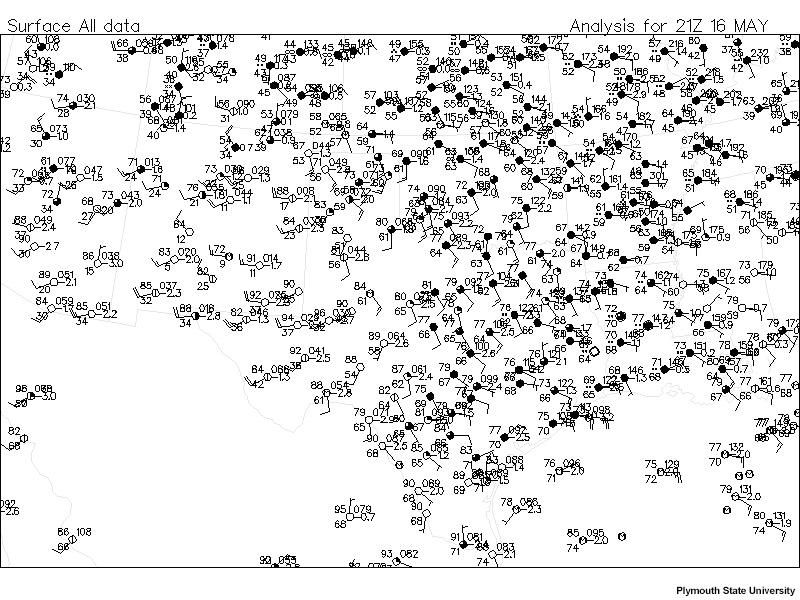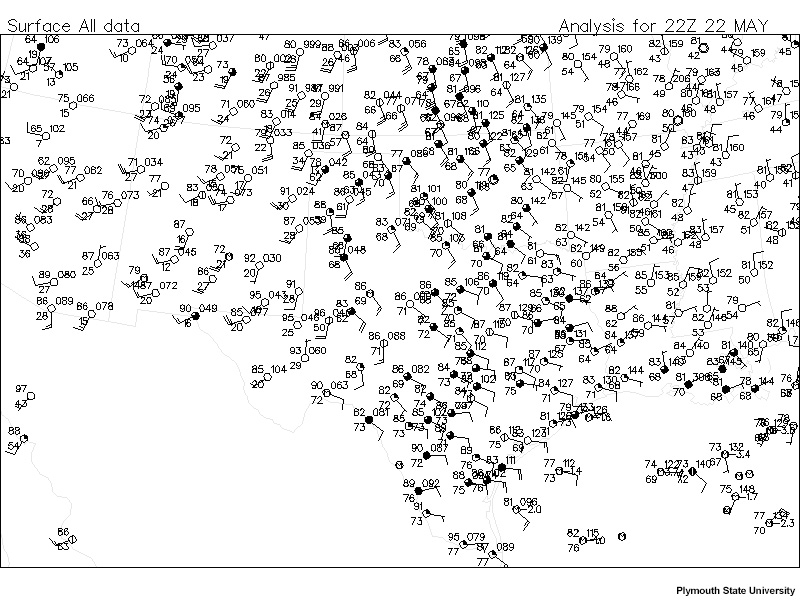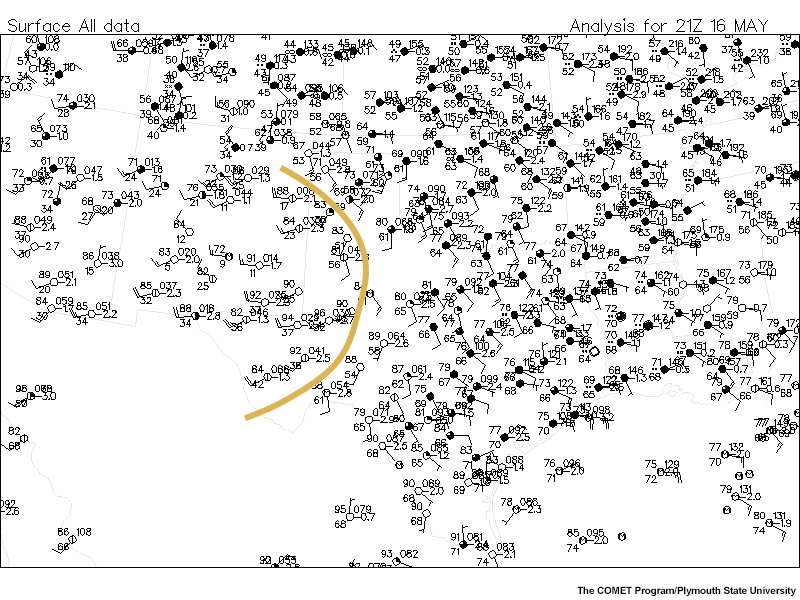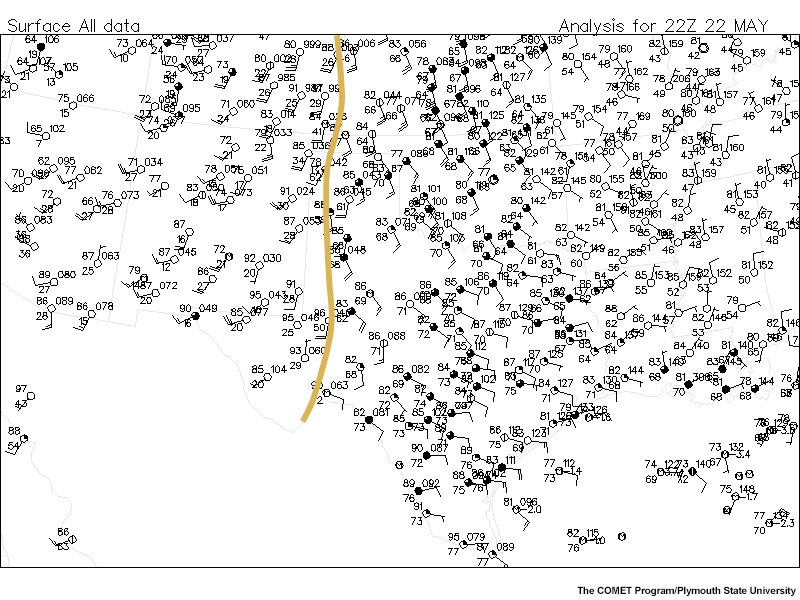Pre-Lab: Finding Fronts using Multiple Fields » Putting it All Together: Practice Examples with Station Observations » Dryline
Example 1
Question 1 of 2
Determine the location of any surface fronts by drawing them in with the pen tool(s). Available colors correspond to the standard color schemes mentioned above.

| Tool: | Tool Size: | Color: |
|---|---|---|
While a temperature gradient is present in western Texas (slightly warmer to the west), the dewpoint gradient is pronounced - dewpoints in the lower to mid 60s are reported near Lubbock and Amarillo, while just across the border into New Mexico the dewpoints dip into the teens. The dryline marks the leading edge of much drier and warmer downsloping air that is mixing into the plains - it begins just west of the border of NM and the panhandles, and extends southward, then southeastward back into north-central TX, before curving slightly westward again and then moving eastward significantly, bending around the Midland-Odessa area, before trailing south-southwesterly again just west of Del Rio.
Drylines can advance quickly to the east during the day and retreat quickly during the overnight hours, so one may observe significant changes in their position on hourly surface observations plots. Again, situational awareness is critical, especially when severe convection is expected.
Example 2
Let’s look at another example to highlight the various shapes of drylines (which are tied to local topography and prevailing synoptic-scale mid-level winds)
Question 2 of 2
Determine the location of any surface fronts by drawing them in with the pen tool(s). Available colors correspond to the standard color schemes mentioned above.

| Tool: | Tool Size: | Color: |
|---|---|---|
This dryline extends further north than in the previous example. From the flow pattern we can guess that a low pressure center is present off the center of the page to the north. From there, we can see temperatures in eastern Colorado are in the upper 80s or so with dewpoint temperatures in the 20s, with widespread winds coming from the south-southwest. Contrastingly, winds in eastern Kansas are from the south-southeast, with dewpoints in the mid 60s and temperatures in the mid 80s - the dryline separates these two airmasses as shown, and extends southward into the very far western Oklahoma and Texas panhandles, southward just east of the Texas-New Mexico Border and then toward Del Rio, Texas.

